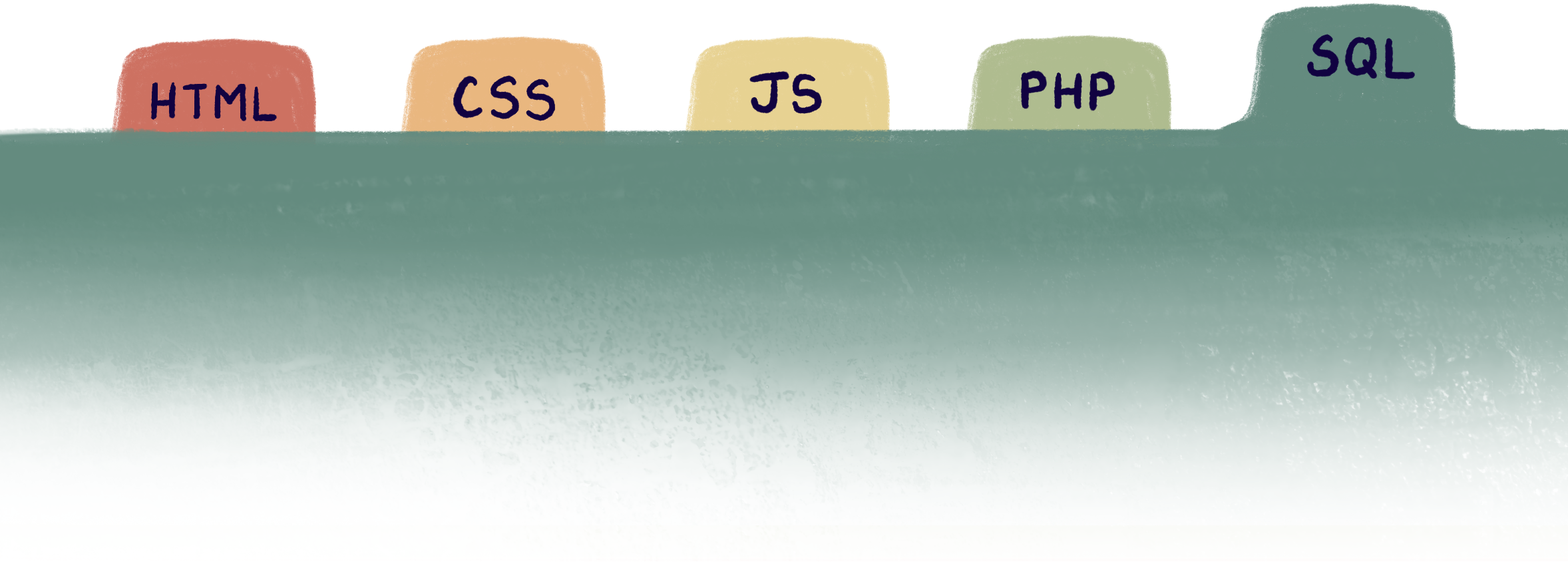Quick Reference Guides
49 SQL/PDO Reference
 Here are some quick reference reminders about SQL and the PDO interface for PHP to talk to an SQL database. This textbook is just designed to give you a toehold in how to use PHP for server-side web app programming. Once you understand how the language works, you can get more details elsewhere. One good place for tutorial-style basic SQL and PDO (including language references) is w3schools. Try w3schools SQL and w3schools PHP MySQL.
Here are some quick reference reminders about SQL and the PDO interface for PHP to talk to an SQL database. This textbook is just designed to give you a toehold in how to use PHP for server-side web app programming. Once you understand how the language works, you can get more details elsewhere. One good place for tutorial-style basic SQL and PDO (including language references) is w3schools. Try w3schools SQL and w3schools PHP MySQL.
Quick Facts
- SQL is a declarative language for talking to a relational database.
- SQL is a statically typed language
- MySQL is a Relational Database Management System (RDBMS or DBMS) that communicates via SQL
- phpMyAdmin is a web-based MySQL administration tool, written in PHP and bundled with XAMPP
- PDO is an object-oriented API for connecting to a database and sending SQL queries from a PHP program.
SQL Basics
Square brackets indicate optional clauses.
SELECT field1, field2, … FROM table [WHERE condition] [ORDER BY field [DESC] …] [LIMIT n] INSERT INTO table (column…) VALUES (value…) UPDATE table SET field1=value1, field2=value2, … [WHERE condition] DELETE FROM table [WHERE condition]
In MySQL, backticks ` ... ` should be used to enclose identifiers such as table or column names to help avoid conflicts if they are to contain reserved keywords or special characters.
PDO Step 1: Connect
Put this code in a connect.php file:
try {
$dbh = new PDO("mysql:host=localhost;dbname=___", "login", "password");
} catch(Exception $e) {
die ($e->getMessage());
}
Then use an include statement to load it into another PHP file.
include "connect.php";
PDO Step 2: Prepare
$command = "SQL command with values replaced by question marks (parameters)"; $stmt = $dbh->prepare($command);
PDO Step 3: Execute
$arguments = [ an array of arguments, one per SQL parameter ]; $success = $stmt->execute($arguments);
PDO Step 4: Check it Worked
if ($success) {
// it worked
} else {
// it failed
}
$stmt->rowCount() // for UPDATE, INSERT, DELETE only
Use a try… catch block for complete error checking.
PDO Step 5: Retrieve (SELECT only)
while($row = $stmt->fetch()) {
// $row["field"] contains the fields
}


Feedback/Errata